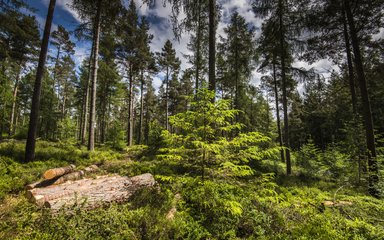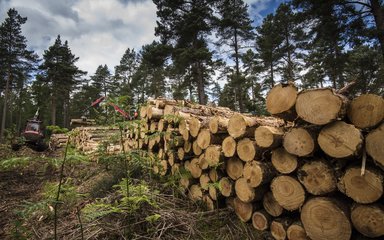
Understanding tree markings in working forests
Why do we mark trees?
Marking trees can provide vital information about a tree and the work site. Marks can indicate a tree has been selected for felling as part of an upcoming harvesting operation. It could also flag up a diseased tree, mark a boundary or show that a tree needs to be protected. Marks can be made in paint, tape or cuts.
What is tariffing?
In forestry, tariffing is the process of selecting, measuring and marking trees to predict the volume of timber that will be produced by felling.
There are three basic steps to estimate the volume of an area of trees using the tariff system.
Count, classify and convert
- Count all the trees in a set area, often by estimating the average number.
- Classify trees by measuring the trunk diameter at breast height (DBH), usually by sampling a number of trees.
- Convert into a volume of timber for that species of tree, using a tariff table.
Most commonly used marks and their meanings
You may notice lots of different markings in our woodlands and forests. The most commonly used marks and their meaning are shown below.
Dots and dashes
Spots indicate trees that have been counted as part of a tariff.
A horizontal line indicates the tree has been measured at girth.


Roman numerals
A proportion of trees are measured to determine their height. These are called volume sample trees. These trees are important for estimating the total volume, and are marked using Roman numerals to identify them.
The letter 'R'
When planning felling operations we think about how machinery will move around the site. We mark some trees with the letter 'R’ for the word 'rack'. A rack is the access route for machines to use.


'PL' for powerline
The letters 'PL' stand for powerline. Trees marked are within two tree lengths of a powerline. These trees won't always be felled, but provide clear warning to anyone working on site the distance that powerlines are and that powerlines may need to be turned off to fell trees in the area.
'RZ' for red zone
The letters 'RZ’ indicate a red zone. Trees in the red zone are within one tree length of a powerline. Once in the red zone, trees can only be felled once the powerline is shut off.





